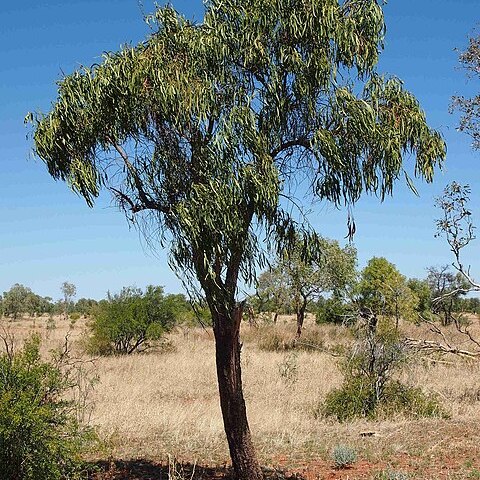A slender tree. It grows 4-7 m tall. The leaves and branches droop. There are small spines along the young branches. The leaves are alternate and smooth. They are long and leathery. The blade can be 10-23 cm long by 0.7-3 cm wide. The leaf stalk is 1-3 cm long. The flowers are large and white or pale yellow. They are 5-10 cm long with long stamens. Up to 6 flowers occur together at the ends of branches. The fruit is round and woody. It is 3-4.5 cm across. It is yellow or red when ripe. It does not split open but contains 5 or more seeds. The fruit are on a long stalk. The fruit are edible.


